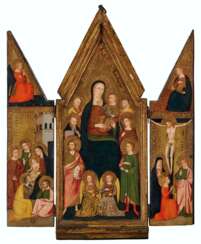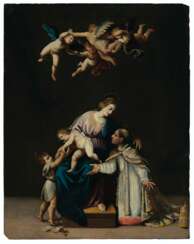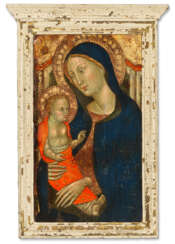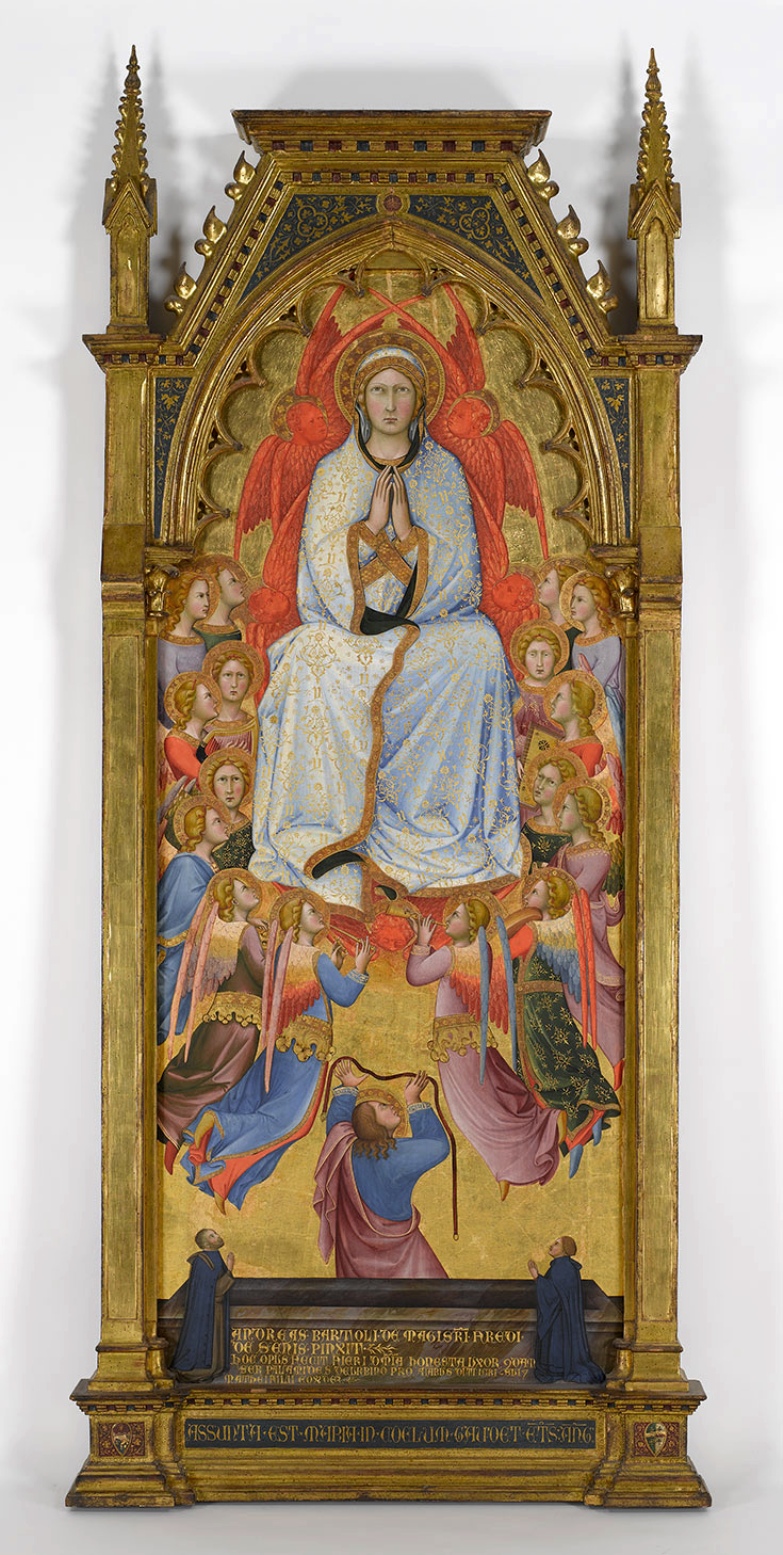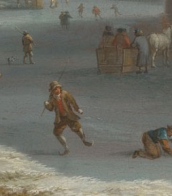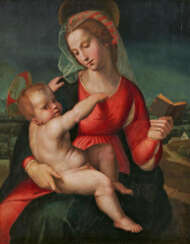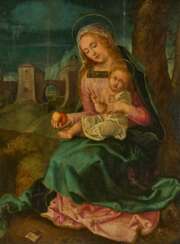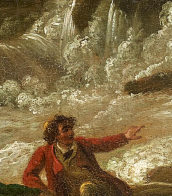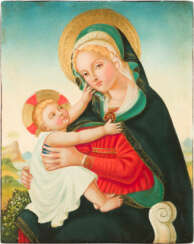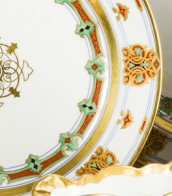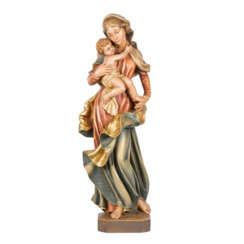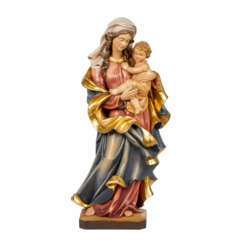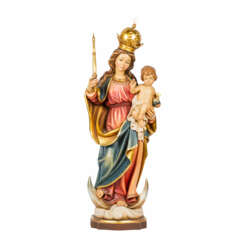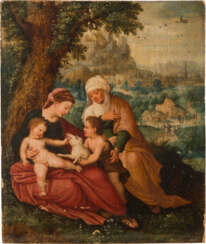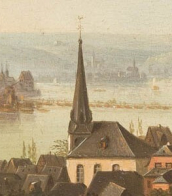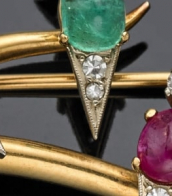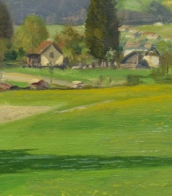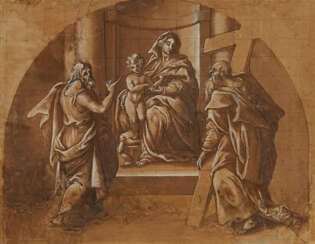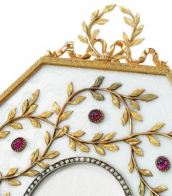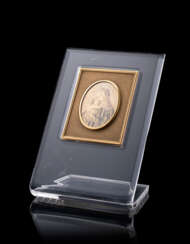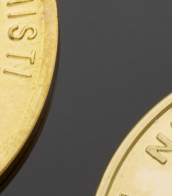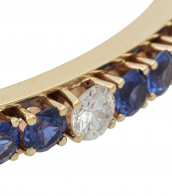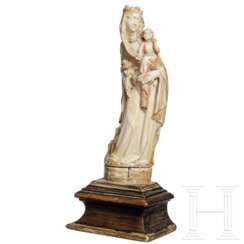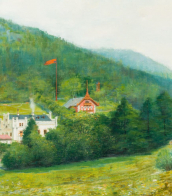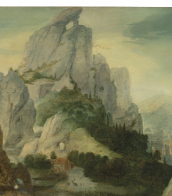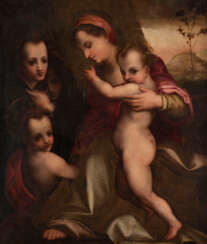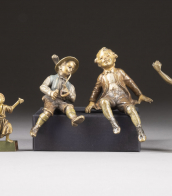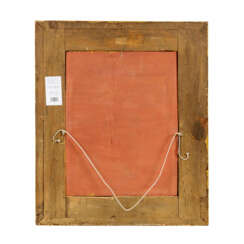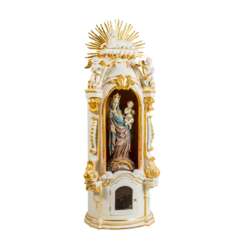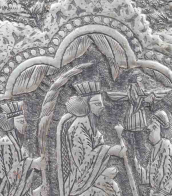madonna and child
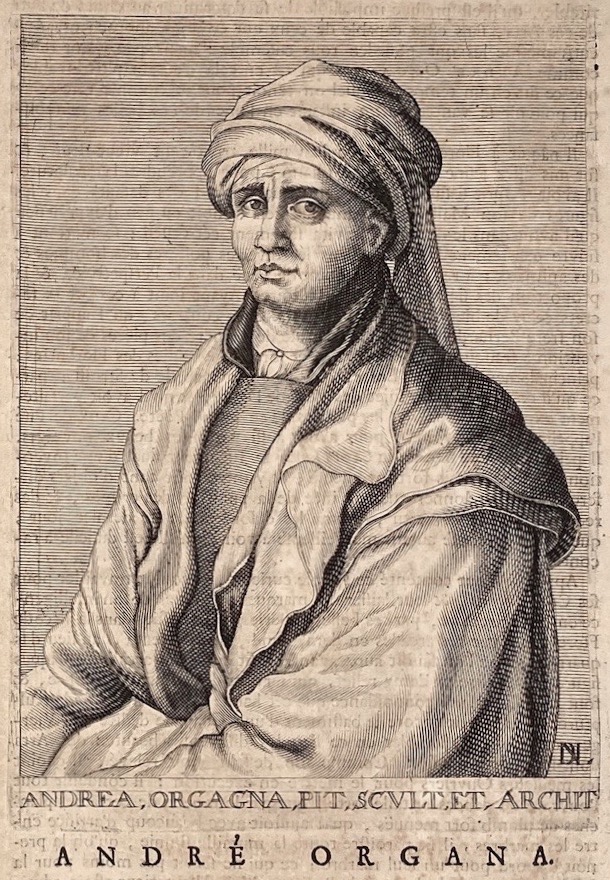
Andrea Orcagna was a distinguished Florentine artist renowned for his multifaceted skills in painting, sculpture, architecture, and administration. His real name was Andrea di Cione, but he was popularly known as Orcagna, a local slang for "Archangel" (Arcangelo).
Andrea Orcagna's artwork is notable for its amalgamation of various artistic styles. As a painter, his work, particularly the "Altarpiece of the Redeemer" (1354-57) located in the Strozzi Chapel of Santa Maria Novella, is acclaimed as the most powerful Florentine painting of its time. This piece marked a shift from the naturalism introduced by Giotto back to the hieratic ideals of Byzantine art, characterized by resplendent colors and a lavish use of gold. Additionally, the fresco trilogy in Santa Croce, including the "Triumph of Death", "Last Judgement", and "Hell", is often attributed to him, although it remains partially fragmentary.
In sculpture and architecture, Andrea Orcagna is best known for the tabernacle in Or San Michele, finished in 1359. This ornate structure houses a painting by Bernardo Daddi and is considered a significant work of Italian Gothic art. His role as capomaestro of Orvieto Cathedral from 1358 to 1362, where he oversaw the mosaic decoration of the façade, further cements his legacy as an influential architect of the period.
Andrea Orcagna's influence extended to his family as well, with his brothers Jacopo di Cione and Nardo di Cione also being notable painters. Jacopo continued Orcagna's style well into the end of the 14th century, even completing Orcagna's "St Matthew altarpiece" during his illness in 1368.
For art collectors and experts, Andrea Orcagna's works offer an insightful glimpse into 14th-century Florentine art, blending the Byzantine style with emerging Renaissance trends. His legacy in painting, sculpture, and architecture makes his works a valuable addition to any collection appreciative of this pivotal period in art history.
To stay updated on sales, exhibitions, and auction events related to Andrea Orcagna's works, consider signing up for updates. This subscription will provide you with the latest information on opportunities to acquire pieces from this master of Renaissance art.
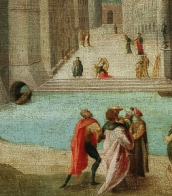
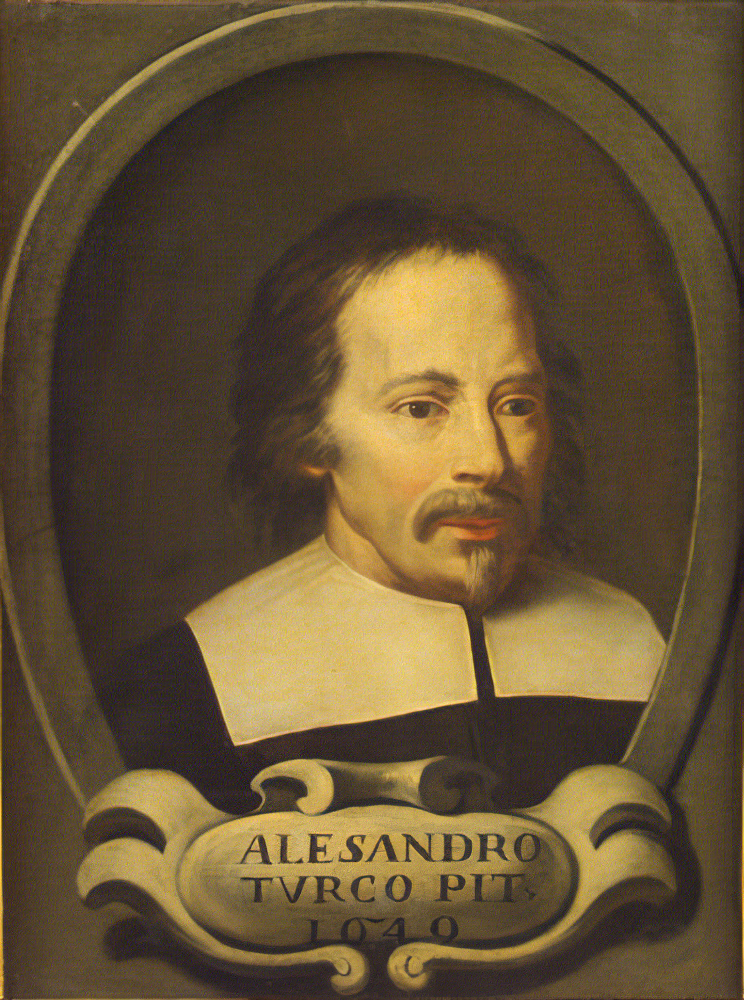
Alessandro Turchi was an Italian painter of the early Baroque, born and active mainly in Verona, and moving late in life to Rome. He also went by the name Alessandro Veronese or the nickname L'Orbetto. His style has been described as soft and Caravaggesque at the same time.

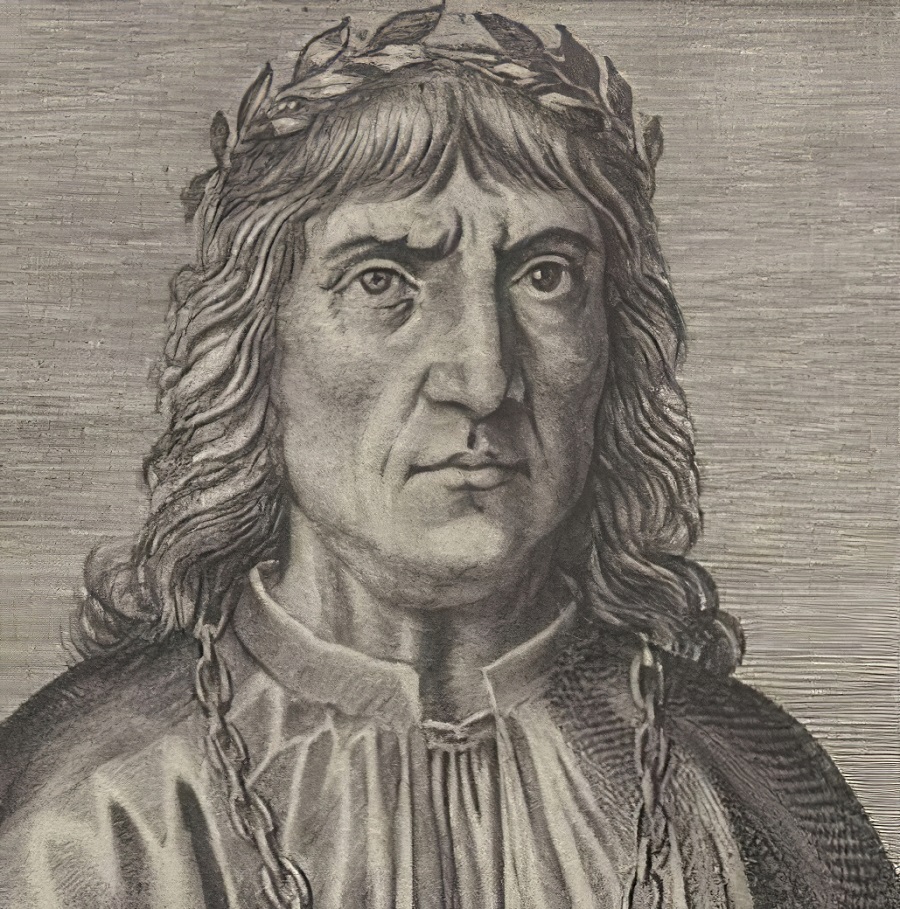
Andrea Mantegna was an Italian painter and engraver, celebrated as the first fully Renaissance artist of northern Italy. Born in 1431 near Vicenza, Mantegna emerged from Francesco Squarcione's Paduan school, distinguishing himself early on with his mastery in painting and his innovative use of perspective. His departure from Squarcione's workshop at a young age to establish his own marked the beginning of a prolific career that would influence the course of Renaissance art.
Mantegna's work is renowned for its dramatic use of perspective and detail, which he applied with meticulous care to both religious subjects and classical themes. His groundbreaking fresco cycle in the Ovetari Chapel, though largely destroyed during WWII, showcased his early mastery of perspective, a technique that would become a hallmark of his style. This early work helped establish his reputation, leading to significant commissions such as the Camera degli Sposi in Mantua's Ducal Palace, completed in 1474, which delighted visitors with its illusionistic space and detailed portraits of the Gonzaga family.
One of his most famous works, the Triumph of Caesar, consists of a series of nine canvases that depict Julius Caesar's victorious return to Rome. These panels, celebrated for their detailed portrayal of the Roman triumph, are now housed in Hampton Court Palace in London. Mantegna's meticulous attention to classical detail and his ability to convey narrative through art have made these works stand out in the history of Renaissance painting.
His exploration of perspective reached a zenith in works such as the Lamentation of Christ, where the use of foreshortening to depict Christ's body laid out for the viewer demonstrated Mantegna's skill in manipulating visual perception for dramatic effect. This piece, along with other later works like the Madonna of Victory and the paintings for Isabella d'Este's private chambers, showcase Mantegna's continuous evolution as an artist and his influence on subsequent generations.
Mantegna's legacy extends beyond his paintings; his engravings were highly valued for their detail and technical execution, influencing artists such as Albrecht Dürer. His draughtsmanship and innovative compositions in both painting and engraving marked a significant contribution to the Italian Renaissance, blending classical themes with the emerging humanist philosophy of the time.
For collectors and experts in art and antiques, Mantegna's works offer a fascinating insight into the transition from medieval to Renaissance art, characterized by an increased emphasis on humanism, perspective, and a revival of classical antiquity. His paintings and engravings not only depict the cultural and intellectual zeitgeist of his era but also demonstrate his technical prowess and creative vision.
To stay informed about new discoveries and upcoming auction events related to Andrea Mantegna's works, signing up for updates is highly recommended. This subscription ensures that enthusiasts are always in the loop regarding sales and exhibitions featuring the magnificent works of this Renaissance master.

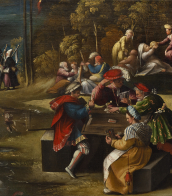
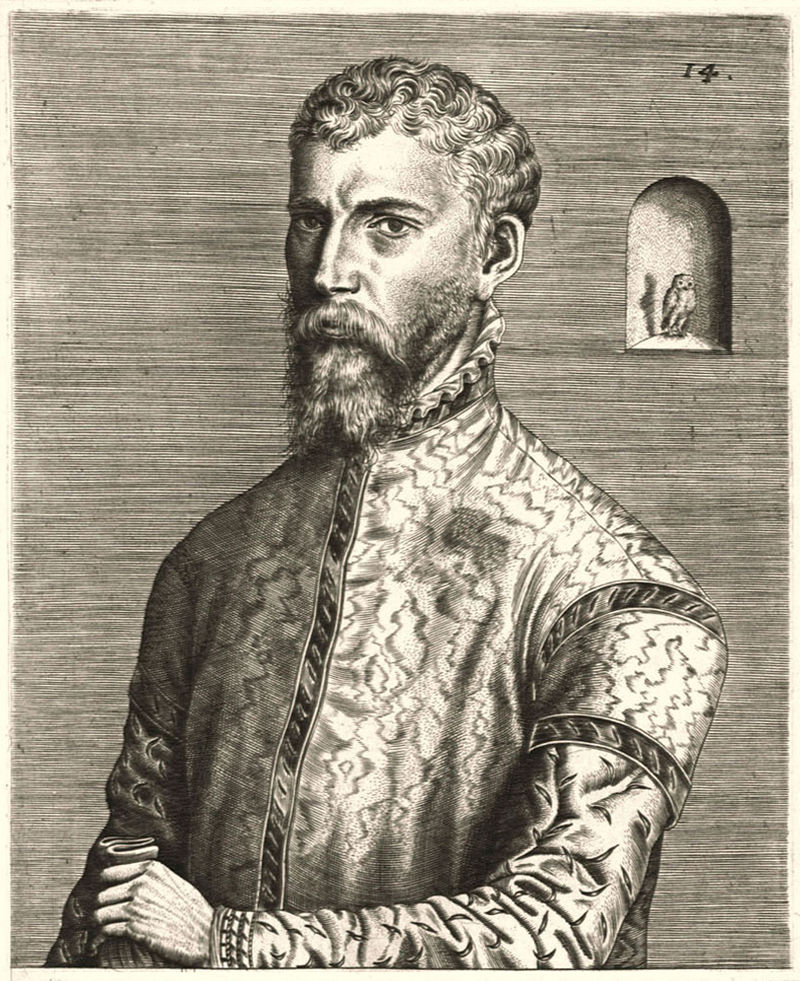
Herri met de Bles is a Flemish artist, along with Joachim Patinir, one of the founders of European landscape painting. He painted mainly landscapes with multi-figured compositions. Like Patinir, his style is characterized by stylized images of rocks and a careful rendering of aerial perspective.

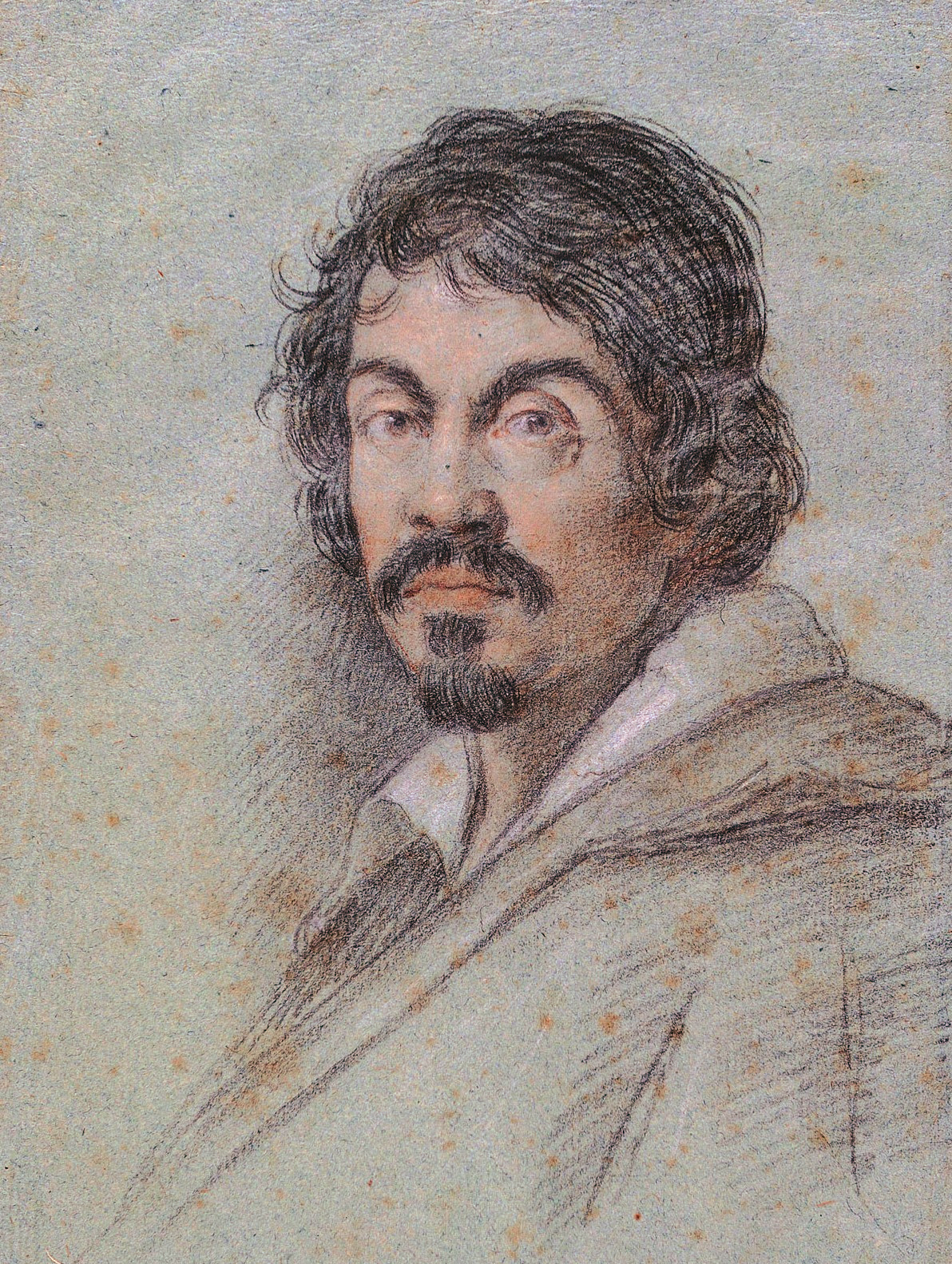
Michelangelo Merisi da Caravaggio, an Italian painter, was a pivotal figure in the transition to Baroque art. Born in Milan or the town of Caravaggio in 1571, his work is renowned for its realistic depiction of human emotion, dramatic use of lighting, and less-than-idealized portrayal of subjects, which broke away from the Mannerist style prevalent at the time.
Caravaggio's life was as dramatic as his art. In 1592, he moved to Rome, where, despite initial hardships, his unique style caught the eye of Cardinal Francesco del Monte, leading to his first public commissions. His success, however, was marred by a tumultuous life filled with brawls and legal troubles. Notably, in 1606, he fled Rome after killing Ranuccio Tommasoni in a brawl, an act that led to a death sentence. He sought refuge in Naples, Malta, and Sicily, continuing to create influential works while attempting to secure a papal pardon.
His most significant contributions to art include introducing a style that combined naturalistic detail with dramatic lighting (chiaroscuro) and psychological realism. This approach had a profound impact on the evolution of Baroque painting. Some of his notable works include "Basket of Fruit," "The Calling of St. Matthew," "The Beheading of St. John the Baptist," and "Supper at Emmaus." These works are characterized by their innovative composition and the intense emotional state they convey.
Caravaggio's fame waned after his death in 1610 under mysterious circumstances while traveling from Naples to Rome. However, the 20th century saw a resurgence in interest in his work, acknowledging his significant influence on Western art.
For collectors and art experts, Caravaggio's works represent a pivotal moment in the history of art, where the transition from Renaissance ideals to Baroque realism is profoundly evident. His paintings can be seen in various museums and galleries, offering a glimpse into the dramatic and emotive potential of art.
To stay updated on sales and auction events related to Caravaggio's works, signing up for updates can be a valuable resource for enthusiasts and collectors. This subscription will provide timely information on new opportunities to acquire pieces linked to this influential and groundbreaking artist.

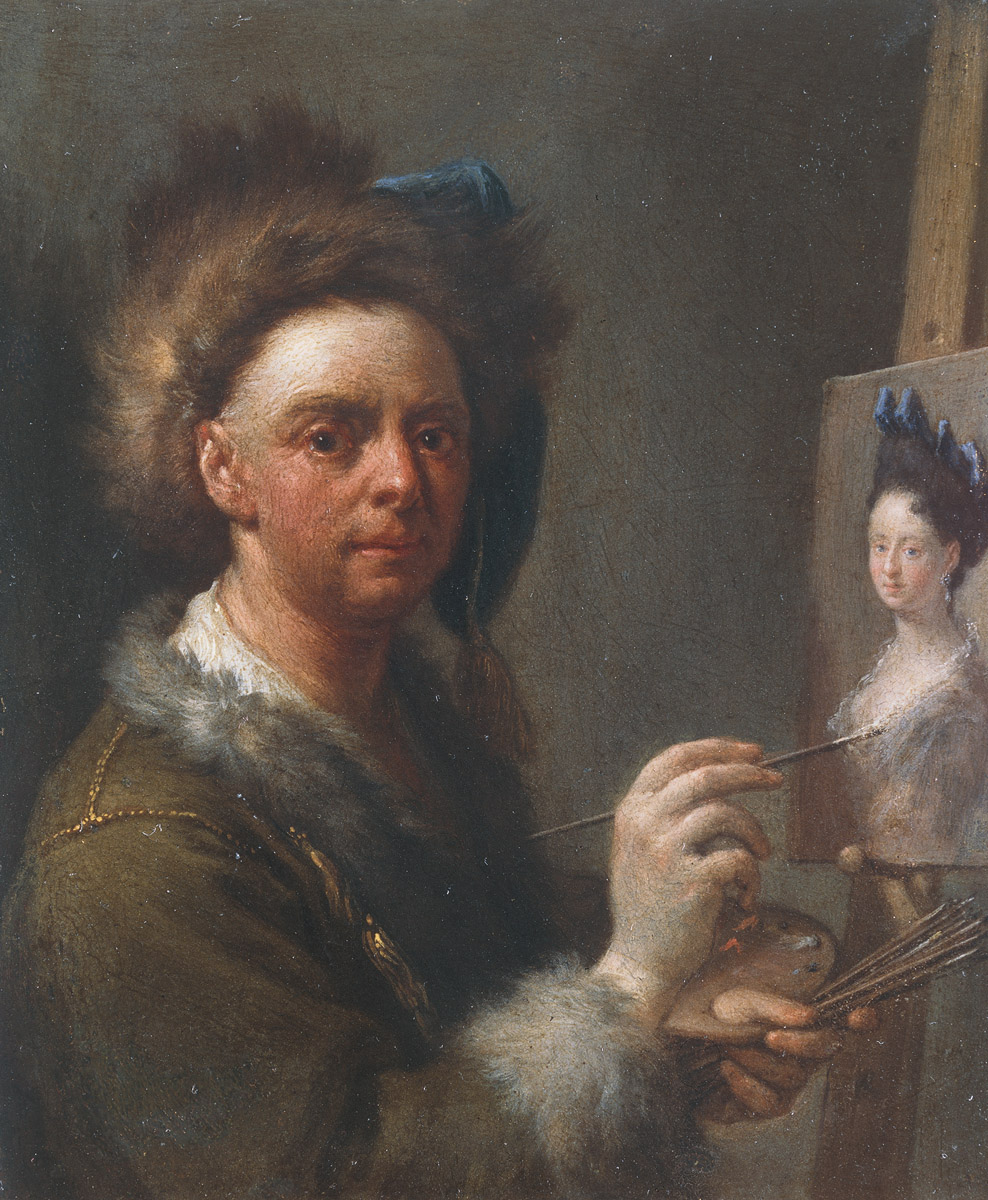
Francesco Trevisani was an Italian painter, celebrated for his contributions to the early Rococo or late Baroque periods. Born in Capodistria, he moved to Venice for training and later settled in Rome, where he gained prominence after the death of Carlo Maratta, becoming a leading figure in Roman art circles. Trevisani's art is known for its vibrant color palette and emotional depth, aligning with Maratta's style but with a distinct sweetness and colorfulness.
Francesco Trevisani's body of work includes frescoes, altarpieces, devotional and mythological scenes, and portraits. Notable works include "The Agony in the Garden" and "The Baptism of Christ," housed in Glasgow Museums and Leeds Museums and Galleries, respectively. His painting "Dead Christ Supported by Angels" reflects his ability to evoke deep religious sentiment, showcasing his skill in capturing the divine intertwined with human emotion.
Francesco Trevisani's influence extended across Europe, with his works being a testament to the religious and cultural narratives of his time. His ability to blend dramatic expression with delicate detailing won him accolades and recognition, making his works sought after by collectors and art enthusiasts alike.
For those interested in the fusion of religious narrative and artistic expression, Francesco Trevisani's works offer a compelling study. His legacy continues to inspire and attract admiration, making him a significant figure in the history of Italian art.
To stay updated on sales and auction events related to Francesco Trevisani, sign up for our newsletter. This subscription is your gateway to the latest updates on available pieces and upcoming events, ensuring you stay informed about opportunities to acquire works by this renowned artist.

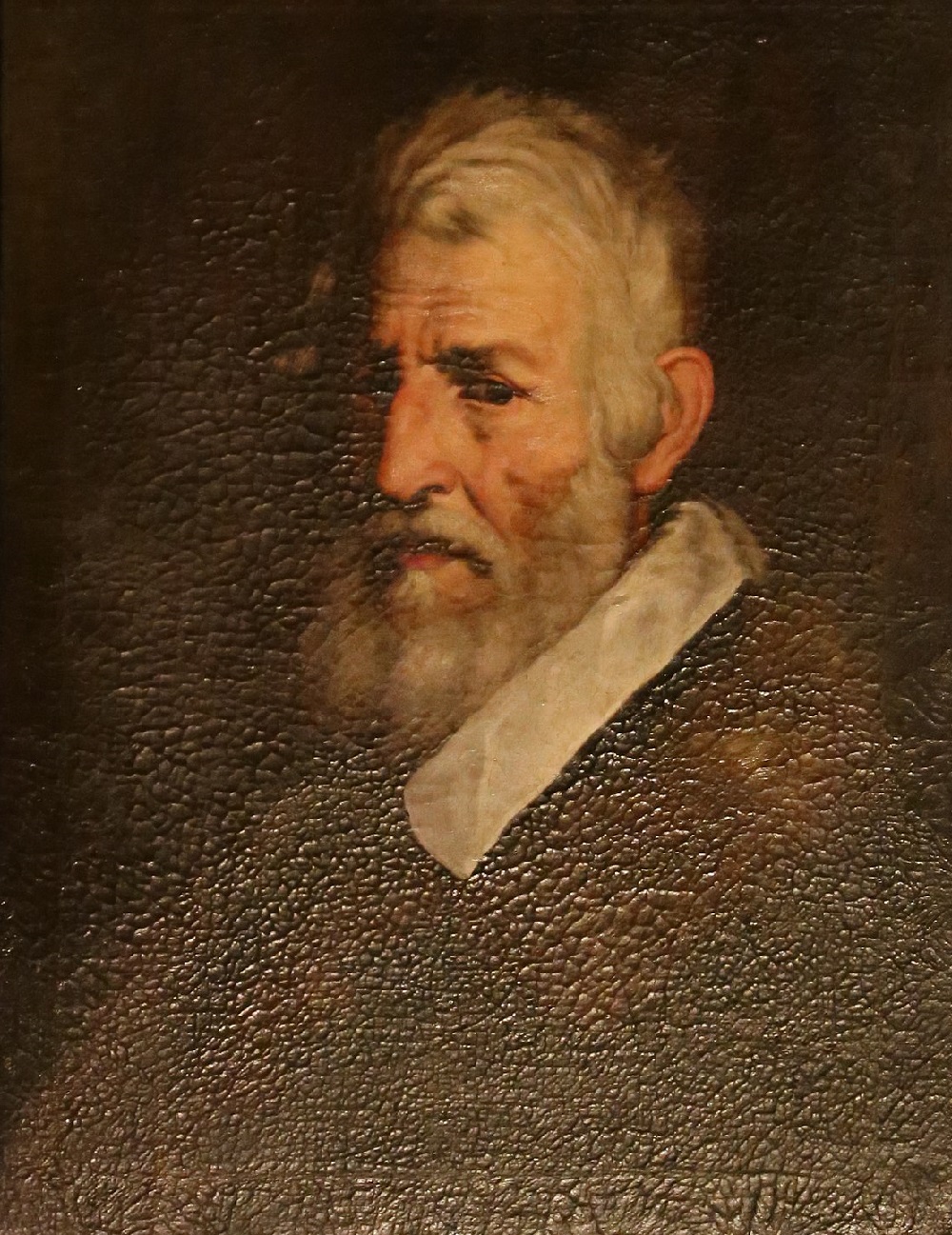
Jacopo da Empoli, real name Jacopo Chimenti, was a prominent Italian painter, a representative of Counter-Mannerism in Italian art. This movement borrowed some features of Mannerism, but resolutely returned to the realism, harmony and poise of the High Renaissance.
Jacopo da Empoli received his artistic training in the workshop of Maso da San Friano and was inspired by the works of Pontormo and Santi di Tito. He created in Florence, small towns in Tuscany and even visited Genoa.
Jacopo da Empoli created religious paintings and portraits, but an interesting feature of his work was his unique still life paintings, completely different from those of the Dutch masters of the time.

